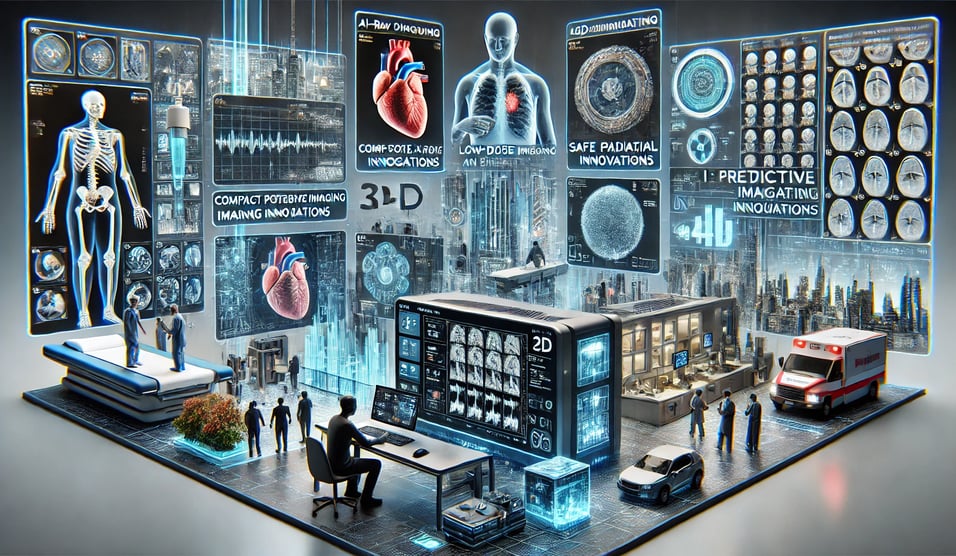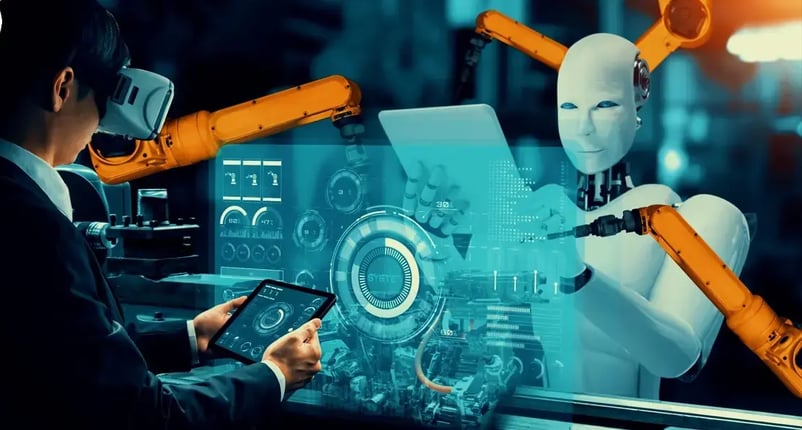The Future of X-ray Technology: Innovations and Emerging Trends
The future of X-ray technology is driven by innovations like AI-powered diagnostics, portable systems, and 3D imaging, enhancing precision and accessibility. Emerging trends focus on low-dose solutions and multimodal integration, revolutionizing medical imaging.
Future of x-ray technology
11/11/20243 min read


The greatest leaps in medical imaging, x-ray technology, and its subsequent innovative developments, so breath-taking they will re-create the definitions for diagnosis and patient care. A new age where healthcare becomes all about digitalization. There awaits for X-rays a prospect as promising as being accurate, safe, and in the time-space available. To see into it and to go a step forward about future face in front of these dramatically needed diagnostic devises read more below:
Artificial Intelligence (AI) and Machine Learning
Revolutionary Advance in AI Superior Diagnostic Skills:
Automated Image Analysis:AI Algorithms can quickly identify fractures, tumors, infections, etc., and it has excellent precision.
Predictive Analytics:ML models analyze patient data and predict the disease course in life and give treatment advice.
Workflow Optimization:AI facilitates the process. This reduces the workload of the radiologists, and it accelerates the process of diagnosis.
Portable and Handheld X-ray Devices
The demand for portable X-ray machines is growing, especially in the remote and emergency settings:
Compact and Lightweight:Modern devices are designed to be transportable and deployed quickly.
Battery-Powered Operation: Higher mobility ensures applicability even when a stable source of power is unavailable.
Point-of-Care Diagnostics:On-scene imaging helps improve patient outcomes because decisions are made faster.
Low-Dose Imaging Technologies
Reducing the amount of radiation from X-ray technology:
Advanced Detectors:New Detector Technologies High-resolution images, with much lesser radiation.
Pediatric Imaging Innovations: Pediatric Imaging New Protocol Specific rules that eliminate the maximum amount of negative, dangerous radiation to the patients.
Iterative Reconstruction Techniques: Iterative Reconstruction Methods Methods that enhance resolution of images at the same time, keeping radiation exposure to its minimum level.
3D and 4D Imaging Capabilities
Beyond traditional 2D imaging, 3D and 4D technologies offer unparalleled diagnostic insights:
Cone Beam Computed Tomography (CBCT): CBCT produces detailed three-dimensional pictures of bones as well as soft tissues.
Dynamic Imaging (4D): Captures motion over time, aiding in functional studies of organs and joints.
Enhanced Surgical Planning: Accurate 3D models make complex procedures like orthopedic surgery and dental implants possible.
Integration with Other Modalities
Hybrid imaging is increasingly becoming more common in general diagnostics:
Multimodal Imaging: Combination of X-ray with ultrasound, MRI or CT. As a result, in a wide range approach, one may be able to tackle an entire difficult medical problem.
Streamlined Workflow: There are fewer rounds of appointments and thus reduce the discomfort to the patient.
Improved Diagnostic Accuracy: With the data cross-checked between modalities, the chances of making a mistake become low.
AI-Driven Preventive Maintenance
The advancements of AI are not only limited to diagnostics but seem to be stretched further to equipment management as well:
Predictive Maintenance: It tracks the performance of the machine so that problems, which would have otherwise brought it down, are identified.
Improved Equipment Lifespan:Since preventive maintenance is performed, devices perform at their optimal levels for several years.
X-ray Imaging in Non-Medical Fields
X-ray has applications apart from medical industries:
Security Screening: AI integrated X-rays scan these locations.
Industrial Use: High resolution imaging captures minute structural defects found within materials and machineries.
Archaeology and Paleontology:With high-resolution X-rays, it will be able to show minute details present in artifacts and fossils without damaging them.
Sustainability in X-ray Technology
To make industries greener, even X-ray technology is being made sustainable:
Energy-Efficient Devices: The latest X-ray machines consume less power without sacrificing performance.
Recyclable Materials:Manufacturers are using recyclable components in their designs.
Digital Solutions: From film to digital imaging, the wastage is saved and the environmental footprint minimized.




Reference Website link
Flexible X-ray Detectors:
Silveray Spinout Wins Funding for Flexible X-ray Equipment - The Times
Portable CT Scanners:
Micro-X to Begin Medical Trials of Its World-First Mobile CT Scanner - Adelaide Now
AI Integration in Medical Imaging:
Gold Coast University Hospital to Use AI to Avoid Backlog of Scans - Courier Mail
Innovative
Contact Us
Service
xraybazar.com
© 2024. All rights reserved.
Address- Rajasthan, India
Gmail Id- xraybazaroffcial.com
Important Links
